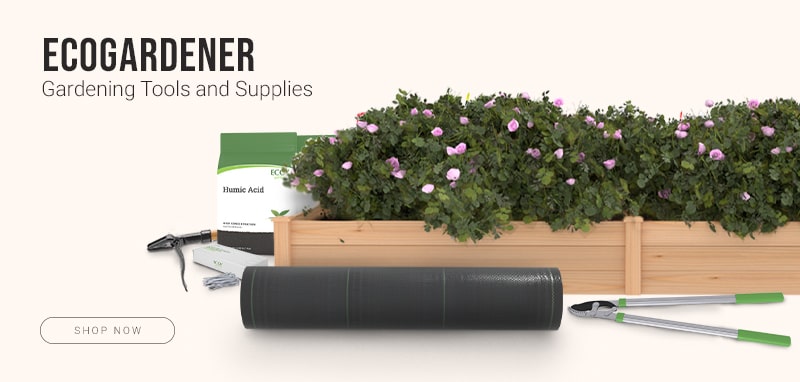One might think that gardening tasks can wait until the weather warms up during spring but don’t store your essential gardening tools just yet! There are plenty of gardening tasks to be done during the winter season. You should be preparing the garden for the cold months way ahead!
Here is our winter garden checklist for 2022:
Contents []
Gardening Essentials For Winter
Install Winter Protection
Many plants are sensitive to the cold, so they’ll need some protection from the elements. Install plant covers like cloches, burlap, or horticultural fleece to protect vulnerable plants from frost. You can also lay landscaping fabric near the root base of trees, shrubs, and late-season crops. Wrapping hessian or horticultural fleece around newly planted trees is also recommended to stave off the winter cold.
Prune Trees and Shrubs

Winter is the best time to prune trees and shrubs because the plants lay dormant during the cold months. Winter pruning enables plants to recover much more quickly.
Because plants are dormant, there are fewer chances of attracting pests or transmitting diseases. Use high-quality garden tools that stay sharp to make pruning easier on the hands. Also, sharp pruning tools make the cleanest cuts, reducing plant trauma.
Prep the Irrigation System
To avoid water damage caused by freezing temps, drain the lines before turning off the irrigation system for the winter season. Cover exposed pipes so they won’t burst or freeze, disconnect, unhook the garden hoses from the water source, drain the water, and store it indoors. Drain your sprinklers to avoid incurring damage caused by the cold weather.
Clean the Garden
From fallen leaves to dried weeds, stacks of straws to bunches of twigs, remove garden debris that could smother the soil during winter. If there is a thick layer of unwanted garden debris on the soil, the lawn will wither and die under all that snow! Use a wheelbarrow to carry heavy loads and a traditional rake to make cleaning up in the garden much easier.
Regular Weeding

While weed growth tends to slow down during the cold months, they’ll spring back to life next year unless you’ve been dutifully removing weeds. Don’t wait until the soil hardens before pulling all the weeds. A standup manual weeder, a trowel, or a shovel make a terrific weeder. Be sure to remove the weed roots so weeds won’t come back when the weather warms up.
Move Vulnerable Plants
Some plants cannot survive the bitter cold, so these should be brought indoors until the weather warms up. To start, trim and clean the plants by removing dead, dying, or leggy growths. Check for pests and diseases and treat the plants as needed. If the plants are already potted, you need to bring them indoors, but if not, you may have to re-pot them first. Use grow lights to keep the plants healthy while being kept indoors.
Do Late Season Planting and Harvesting
The winter season doesn’t have to be the end of the growing season. Some late-season crops like spinach, turnips, beets, carrots, peas, cauliflower, and most leafy green vegetables thrive in cool climates. So go ahead and do some late-season planting to enjoy a winter bounty! Don’t forget to install burlap, fleece, or cloches to protect the crops from freezing winds.
Add Mulch
Mulching adds a protective barrier against the cold. It also prevents moisture from evaporating, ensuring excellent soil texture and controlling soil erosion. Amend the soil with organic fertilizers before laying the landscape fabric. To add mulch, lay landscape fabric over the soil and add 3 to 4 inches of mulching materials, such as wood chips, old hay, wood shavings, tree leaves, or grain straws. You can also use smooth pebbles as mulching materials.
Clear the Gutters
The cold climate can be incredibly damaging to the gutters, so before the winter season sets in, clear the drains and water pipes. Remove dead leaves, grime, dirt, and debris that collect in the water pipes and gutters because these will cause ice buildup. You can get the gutters professionally cleaned, or you can do it yourself as long as you’re wearing the right gear and using the right tools.
Prep Garden Tools for Storage
Now that the winter season is here, you can clean up your favorite gardening tools for storage. Clean and disinfect your trowels, hand pruners, hori-hori knives, loppers, shovels, weeders, etc. Hedge trimmers and chainsaws should be deep cleaned to remove dirt on the small moving parts. After cleaning these tools, add a thin coat of linseed oil to prevent rust and pack these away in storage.
Winter Gardening with ECOgardener

Gardening will wind down as the winter season sets in. But before you take a quick break from the freezing temps, tick all these to-dos on your winter gardening checklist!
Alternatively, head over to our online store to learn more about the eco-friendly products that can help you enjoy your winter gardening.



